Special Report
Newest Dog Breeds You've Probably Never Heard Of

Published:
Last Updated:

Every year, the American Kennel Club, the country’s purebred dog registry, considers new breeds to add to its index. It’s a rigorous vetting process as the AKC has stringent eligibility requirements for full recognition.
Among these, the prospective breed must have a demonstrated U.S. following — that is, there must be a national club with at least 100 members. There also must be a substantial population in the country of at least 300 dogs of the same breed and all with a three-generation pedigree. There are geographic requirements, too. The breed must be found in at least 20 states. Other considerations include observations by AKC field staff, competitions, and specialty shows. The process often takes years.
These requirements largely explain why the AKC has recognized only 31 new breeds since 2010. Some of the breeds, such as the Xoloitzcuintli, are ancient and little changed over millennia but perhaps only recently introduced to this country. Other breeds, such as the Dogo Argentino, were created in the 20th century.
The most recent additions to the AKC registry — two new breeds have already been recognized this year — are a cosmopolitan bunch: one originated in Argentina (the first breed from that country to be recognized), two in France, one in the Middle East by way of Italy, one in the Netherlands, and one in West Africa. Interestingly, all were used for hunting and/or retrieving game.
Many people first get their dogs when they are just puppies and form bonds that last a lifetime. While they would perhaps never say it out loud, some dog owners may privately wish their puppy would never grow up — these are 20 dogs that stay puppies the longest.
To identify the newest dog breeds, 24/7 Tempo reviewed the dog breeds recognized as registrable in the last 10 years by the American Kennel Club. Information about the breed group and life expectancy is from the AKC.
Click here to see the newest dog breeds you’ve probably never heard of
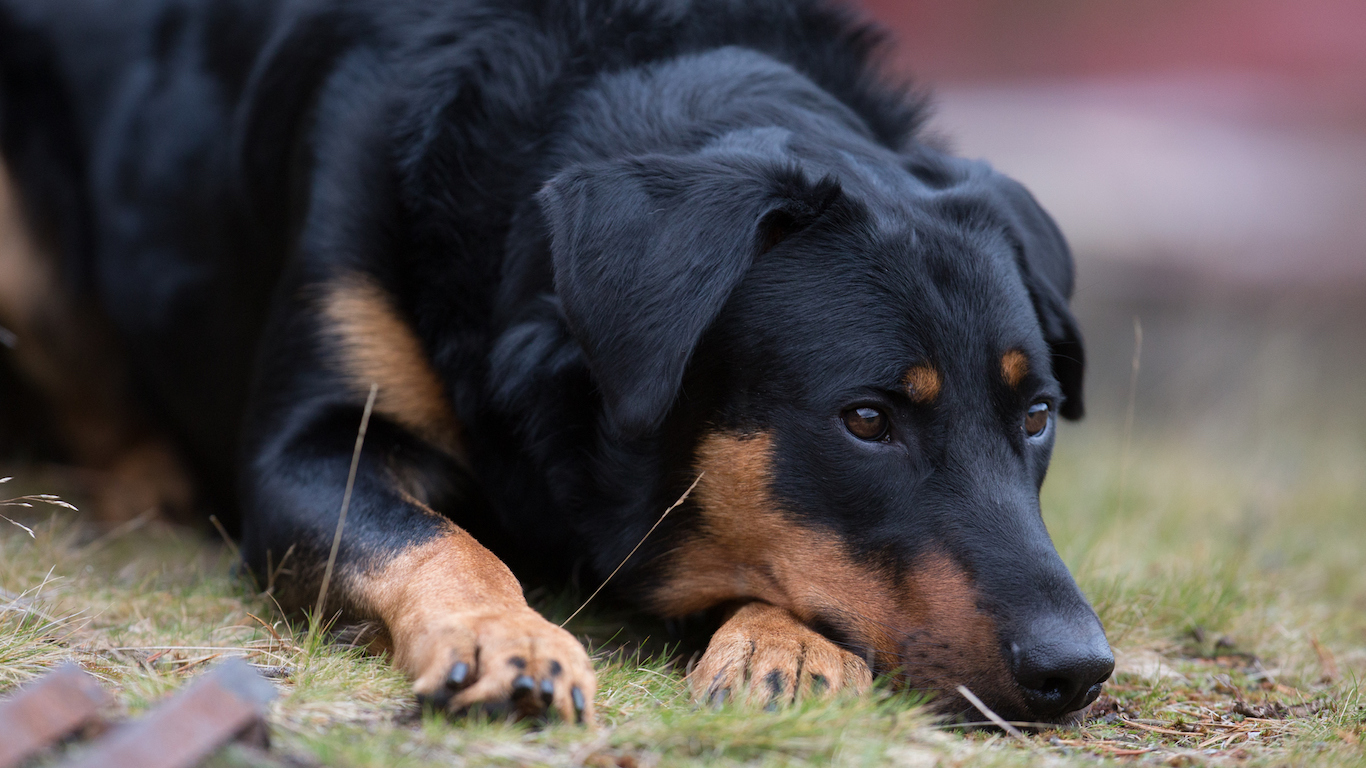
Beauceron
> Year registered: 2007
> Weight: 70-110 pounds
The Beauceron is a powerful, athletic herding dog of the lupoid, or wolf, type and can weigh up to 110 pounds. It is very active, and needs to be challenged physically and mentally. It is characterized by a black or dark gray coat and red markings.
[in-text-ad]

Swedish Vallhund
> Year registered: 2007
> Weight: 20-35 pounds
Vallhund means “herding dog” and the breed dates back to the time of the Vikings. It almost went extinct but was revived in the 1940s and first brought to the U.S. in the 1980s. It is similar in appearance to the corgi, but not as stocky.

Dogue de Bordeaux
> Year registered: 2008
> Weight for males: 110+ pounds
> Weight for females: 99+ pounds
Dogue is French for “mastiff,” and this is a big, muscular breed with a massive head. While it is not aggressive, it is not great with other dogs. Dogue de Bordeaux was featured in the 1989 Tom Hanks’ movie “Turner and Hooch” but was not recognized by the AKC until 2008.
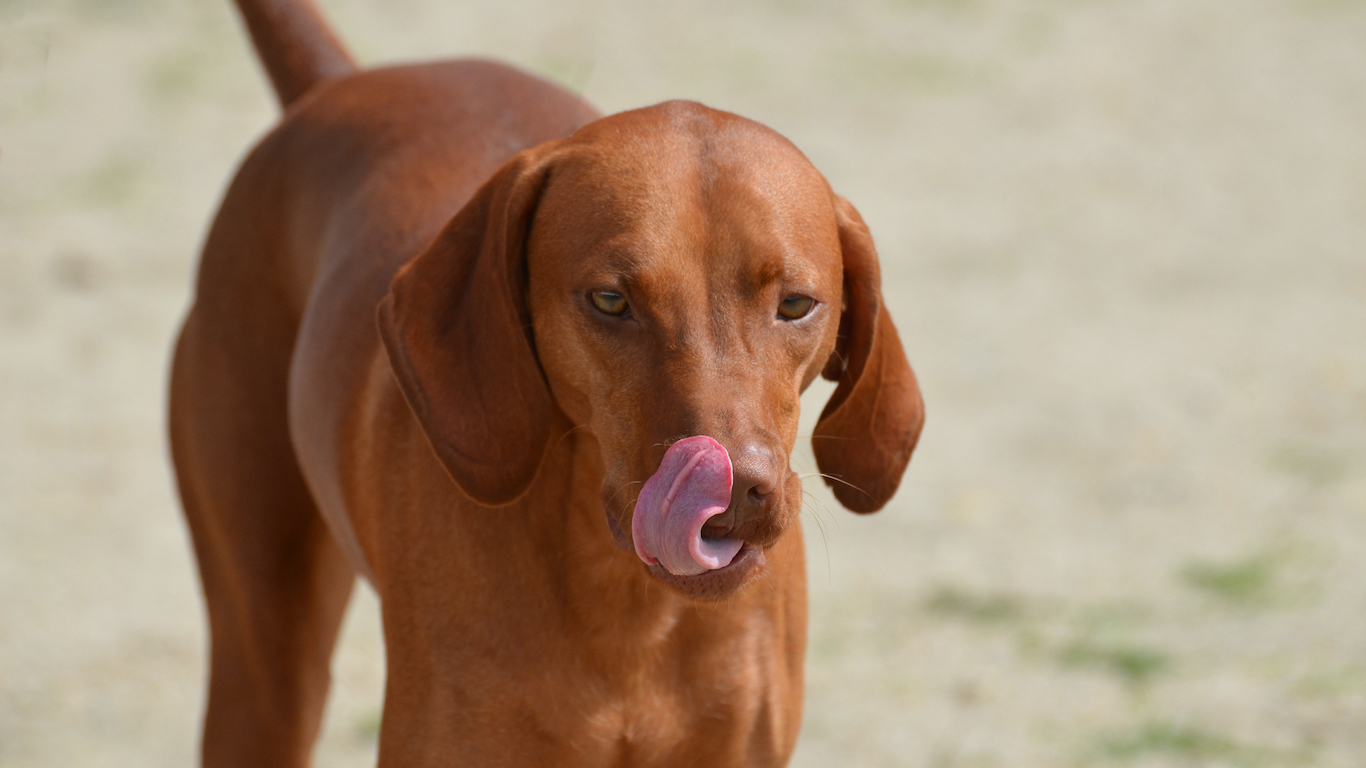
Redbone Coonhound
> Year registered: 2009
> Weight: Proportionate to height
As its name suggests, this is a red-colored hunting dog best suited to rural areas. It is descended from red hounds brought to the U.S. by early settlers from Scotland and Ireland. It is a cold-nosed dog, meaning it is good at following old, or cold, trails.
[in-text-ad-2]
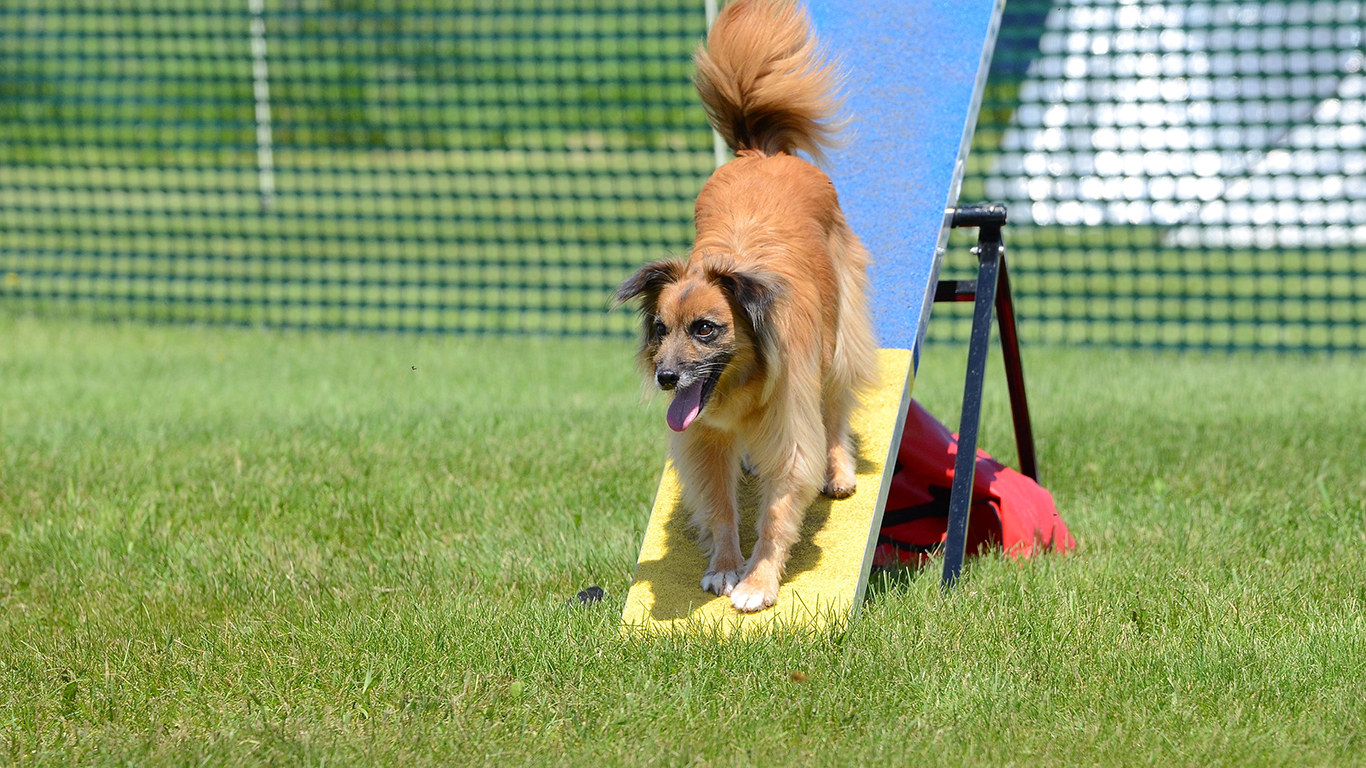
Pyrenean Shepherd
> Year registered: 2009
> Weight: 15-30 pounds
The Pyr shep originated in the Pyrenees Mountains and is still used today as a sheep herder. It is extremely devoted to its owner and needs to be kept busy. It comes in rough-faced and smooth-faced varieties that can be born within the same litter.
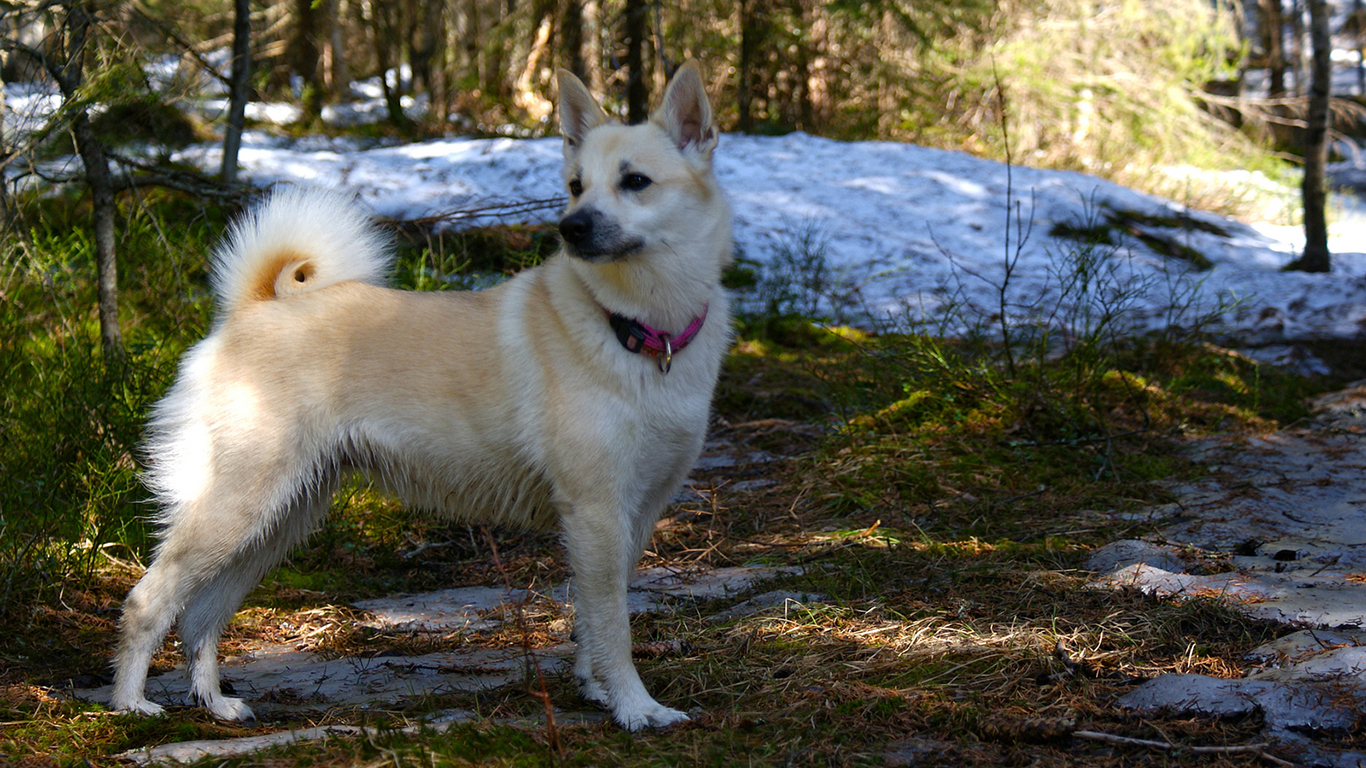
Norwegian Buhund
> Year registered: 2009
> Weight for males: 31-40 pounds
> Weight for females: 26-35 pounds
The buhund is an extremely intelligent herding and guard dog, with a lot of energy, strength, and stamina. It is very obedient and can be trained for police work and to aid the hearing impaired. It is also a good watchdog and likes to bark.
[in-text-ad]
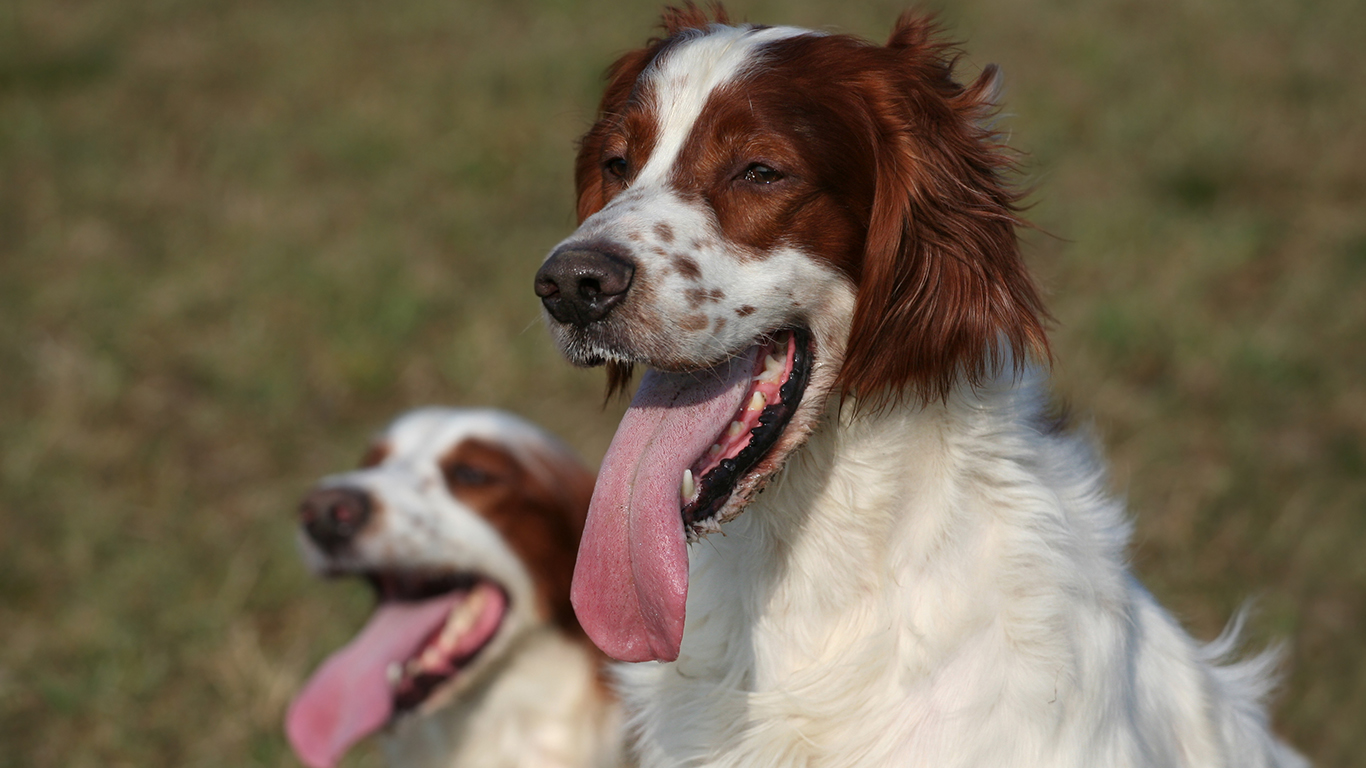
Irish Red and White Setter
> Year registered: 2009
> Weight for males: 42-60 pounds
> Weight for females: 35-50 pounds
Despite its name, this breed’s base color is white, with islands of red. It is a hunting dog and its distinctive coat makes it easier to spot from a distance. It is active, eager to please, and good with children as well as other dogs.
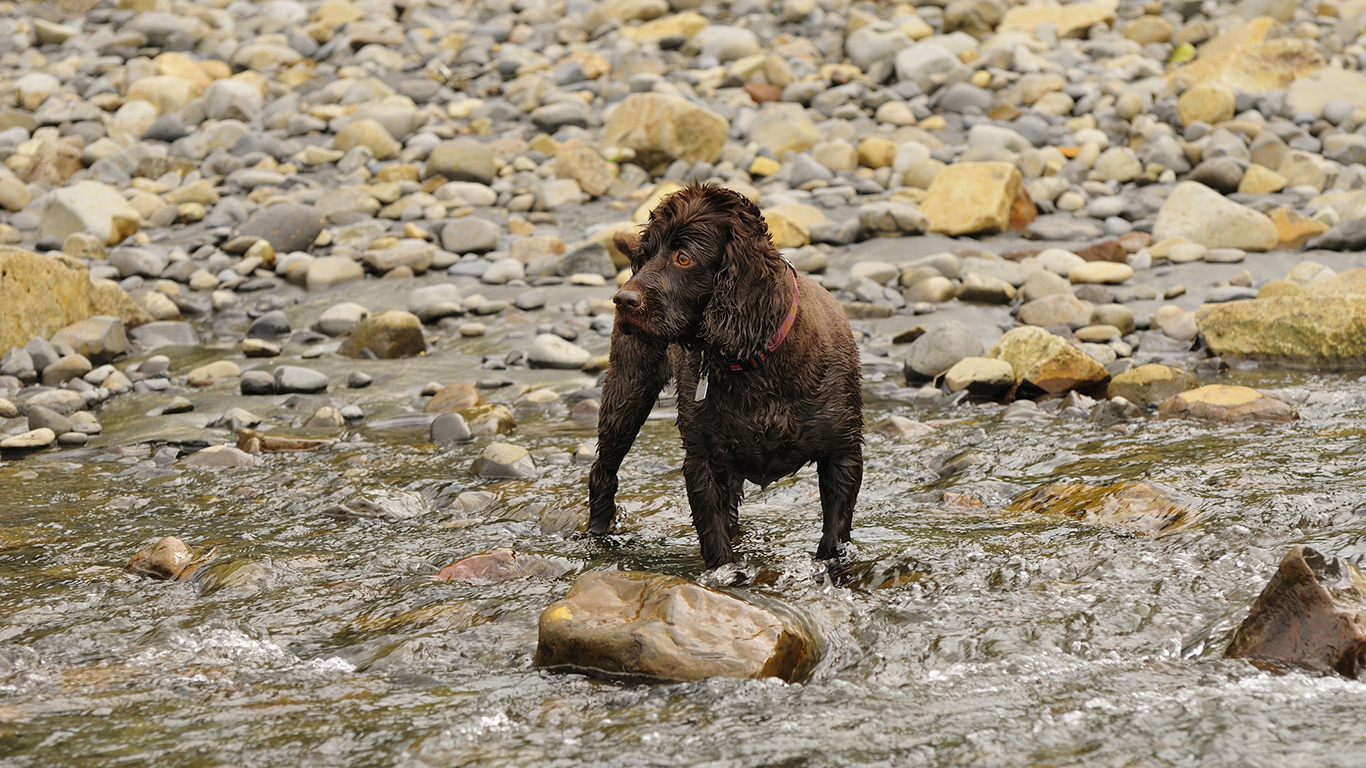
Boykin Spaniel
> Year registered: 2009
> Weight for males: 30-40 pounds
> Weight for females: 25-35 pounds
The Boykin spaniel is named after L.W. “Whit” Boykin of South Carolina. It was first bred in the early 1900s for hunting ducks and wild turkeys in the Wateree River Swamp. Conditions there required a rugged dog that could retrieve birds on land and water and could fit in a small boat.

Bluetick Coonhound
> Year registered: 2009
> Weight for males: 55-80 pounds
> Weight for females: 45-65 pounds
Named for its mottled coat, the bluetick is a sleek, strong, nocturnal hunter with an exceptional nose. It can be challenging as a pet because it needs a job and plenty of exercise. It has a very strong drive to pursue prey, and it likes to bark, especially when in pursuit.
[in-text-ad-2]

Leonberger
> Year registered: 2010
> Weight for males: 110-170 pounds
> Weight for females: 90-140 pounds
The Leonberger was popularized by Heinrich Essig of Leonberg, Germany in the 1800s. This very large breed caught the attention of artists and celebrities and was even used in theater productions in the U.S. It almost went extinct after World War I but was revived in Europe and re-established in America in the 1970s and 1980s.
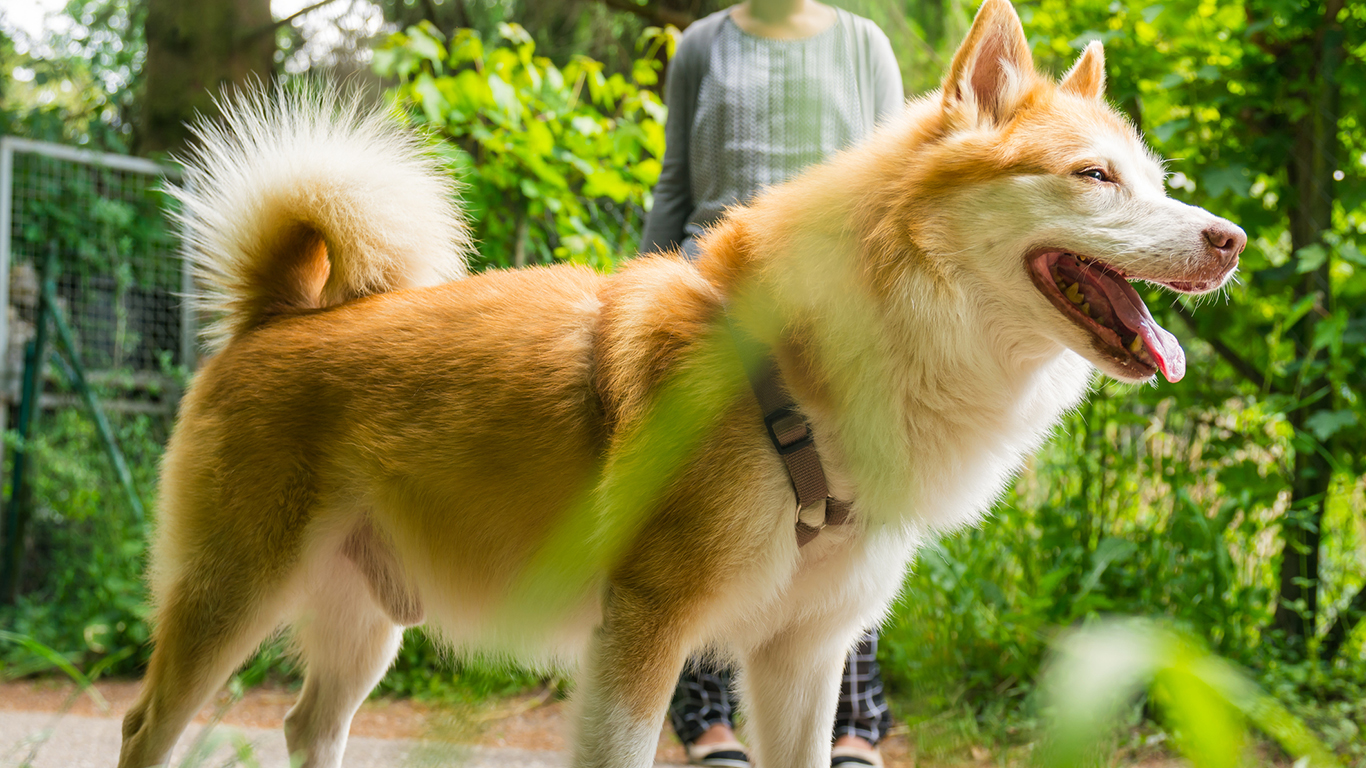
Icelandic Sheepdog
> Year registered: 2010
> Weight for males: 30 pounds
> Weight for females: 25 pounds
Known as the “Dog of the Vikings,” the Icelandic sheepdog is a Spitz type with a foxy face and friendly expression. Spitz characteristics include pointy ears and bushy tail. The Icelandic sheepdog can have a long or short coat, but both types are thick and weatherproof. A true herding dog, it is athletic and very active.
[in-text-ad]
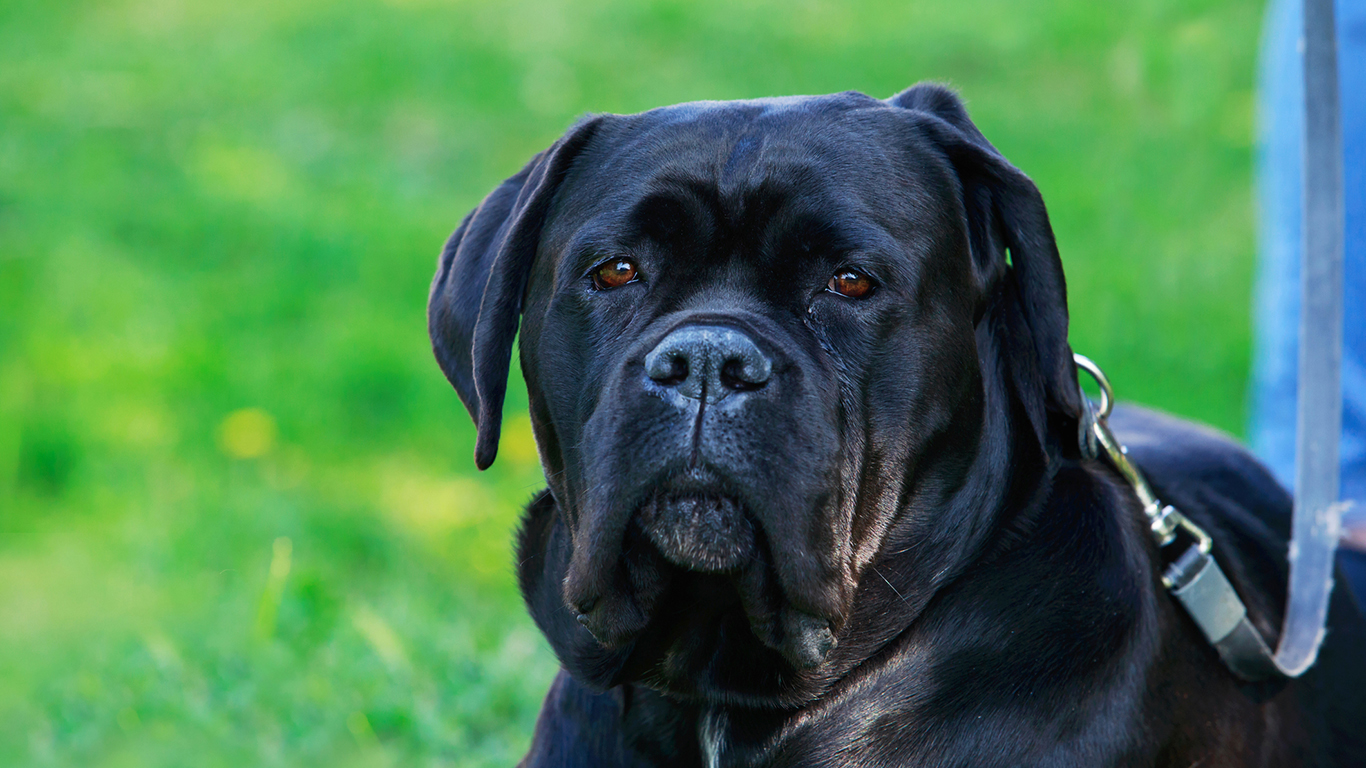
Cane Corso
> Year registered: 2010
> Weight: Proportionate to height
Originating in Italy and bred as a guard dog, the cane corso is described by the AKC as a peerless protector. Notwithstanding its intimidating appearance, it is also intelligent, loyal, and docile in the company of its owners. However, that docility may not extend to others, and the cane corso requires intensive socialization and training.

Xoloitzcuintli
> Year registered: 2011
> Weight for toy: 10-15 pounds
> Weight for miniature: 15-30 pounds
> Weight for standard: 30-55 pounds
The Xoloitzcuintli was named after an Aztec god — the Aztecs revered the breed and believed it to have healing powers. One of the world’s most ancient breeds, it was actually registered with the AKC from 1887 to 1959 as the “Mexican Hairless” dog, but was dropped because of insufficient numbers being bred and registered. The Xoloitzcuintl was subsequently revived and officially recognized in 2010.

Norwegian Lundehund
> Year registered: 2011
> Weight: 20-30 pounds
Also known as the Norwegian puffin dog, this breed was originally used to retrieve birds from steep cliffs on remote islands. It not only has extraordinary climbing abilities, but also some unique physical characteristics, including at least six toes on each foot and a remarkably flexible neck that enables it to turn around in narrow caves.
[in-text-ad-2]
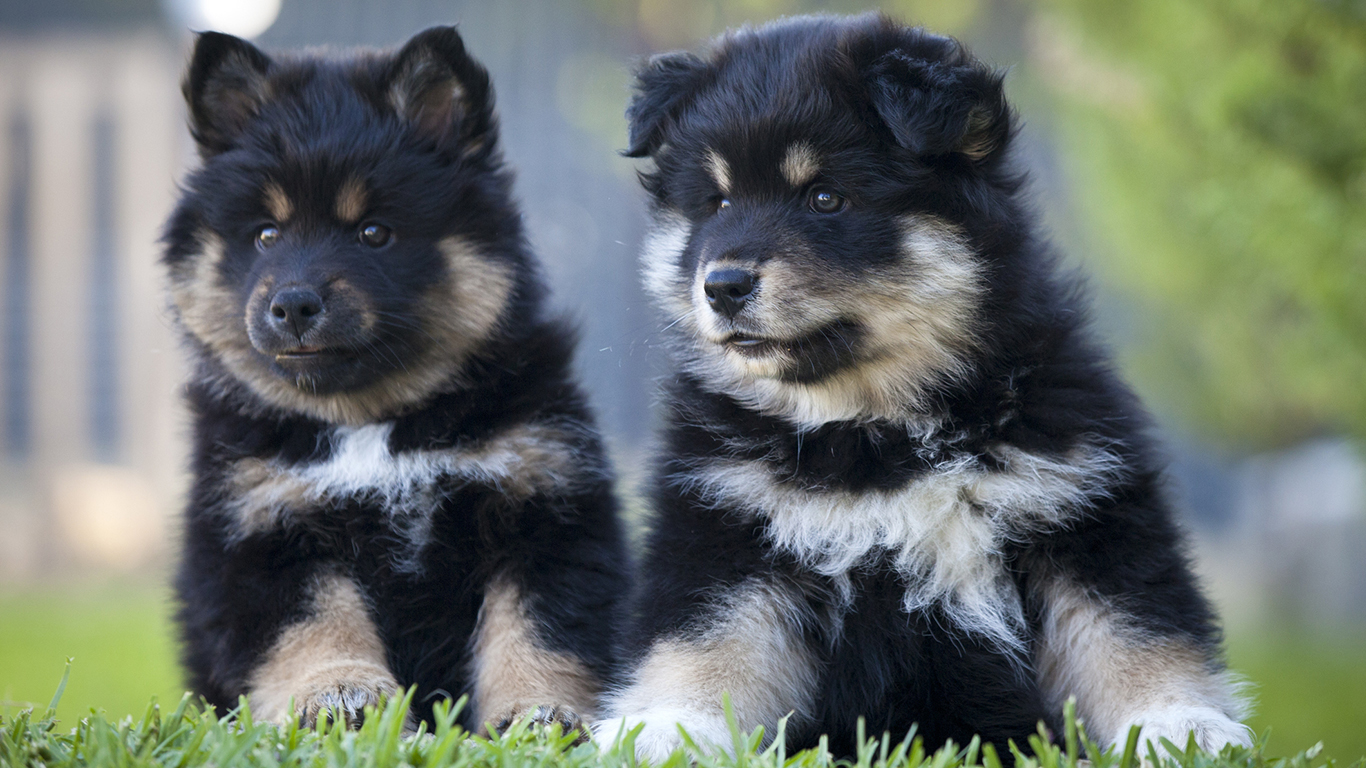
Finnish Lapphund
> Year registered: 2011
> Weight: 33-53 pounds
The Finnish Lapphund is an ancient breed that was used by indigenous people to herd reindeer. It has a tendency to bark, which makes it a good watchdog but also means it requires careful training. The Lapphund is used as a therapy dog and in search and rescue.

Entlebucher Mountain Dog
> Year registered: 2011
> Weight: 55-65 pounds
Originating in Switzerland, the Entlebucher was used to herd cattle in the Alps. It is small, muscular, athletic, and agile. The Entlebucher has a beautiful coat — black with symmetrical white and tan markings — that requires minimum upkeep.
[in-text-ad]
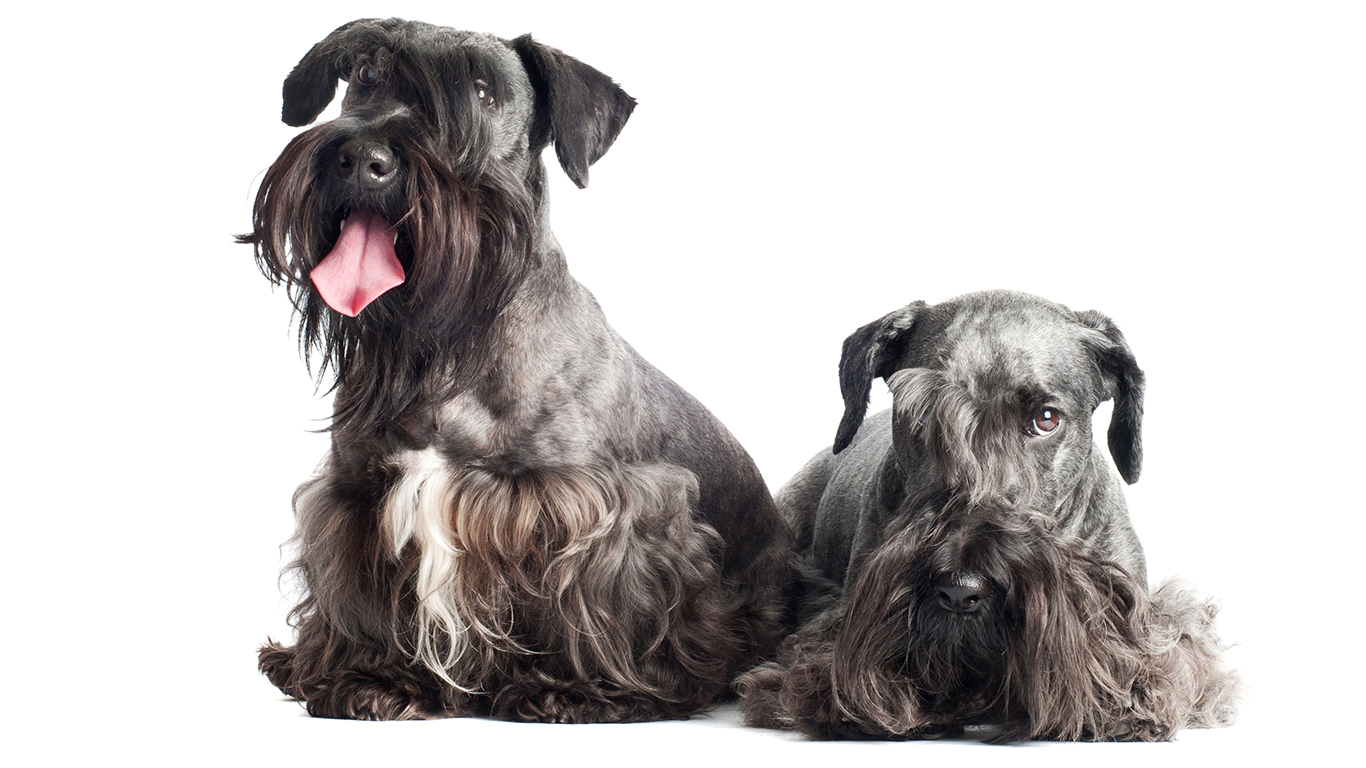
Cesky Terrier
> Year registered: 2011
> Weight: 14-24 pounds
The Cesky terrier was first bred in 1949 by a Czech geneticist, who started with Scottish and Sealyham terriers. This little hunting dog has a long body and short legs. The Cesky terrier comes in two colors: blue-gray and light brown. It has a lot of facial hair and a long coat that requires regular grooming.
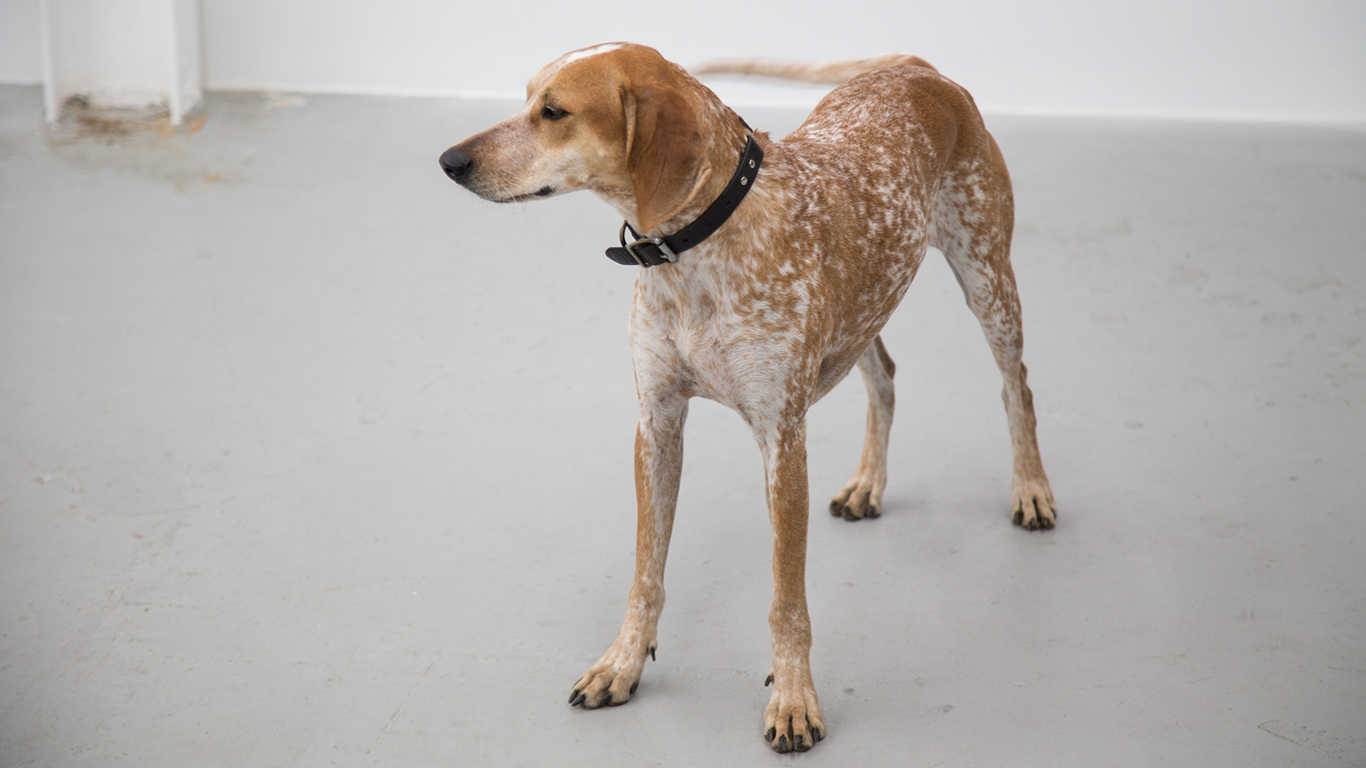
American English Coonhound
> Year registered: 2011
> Weight: 45-65 pounds
Bred to hunt raccoons and foxes, American English coonhounds have been around for centuries. George Washington, an avid fox hunter, may have been the first in the U.S. to have one. They are great hunters and can follow their prey up a tree.

Treeing Walker Coonhound
> Year registered: 2012
> Weight: 50-70 pounds
The treeing walker coonhound is another dog that was bred to hunt raccoons. In fact, it has been called the “people’s choice” of coonhounds. Its name may be misleading as it is a very strong runner and has a competitive character.
[in-text-ad-2]

Russell Terrier
> Year registered: 2012
> Weight: 9-15 pounds
The Russell terrier breed originated in England and was developed in Australia. It is a strong working dog and requires lots of exercise. It is also very intelligent and good at tricks. The Russell Terrier has a weatherproof coat that can be smooth, broken, or rough.

Chinook
> Year registered: 2013
> Weight for males: 55-90 pounds
> Weight for females: 50-65 pounds
The official state dog of New Hampshire, the Chinook was developed as a sled dog by polar explorer Arthur Treadwell Walden in the early 1900s. One of the pups in the first litter was named Chinook, and today all of the members of this rare breed are descended from him.
[in-text-ad]
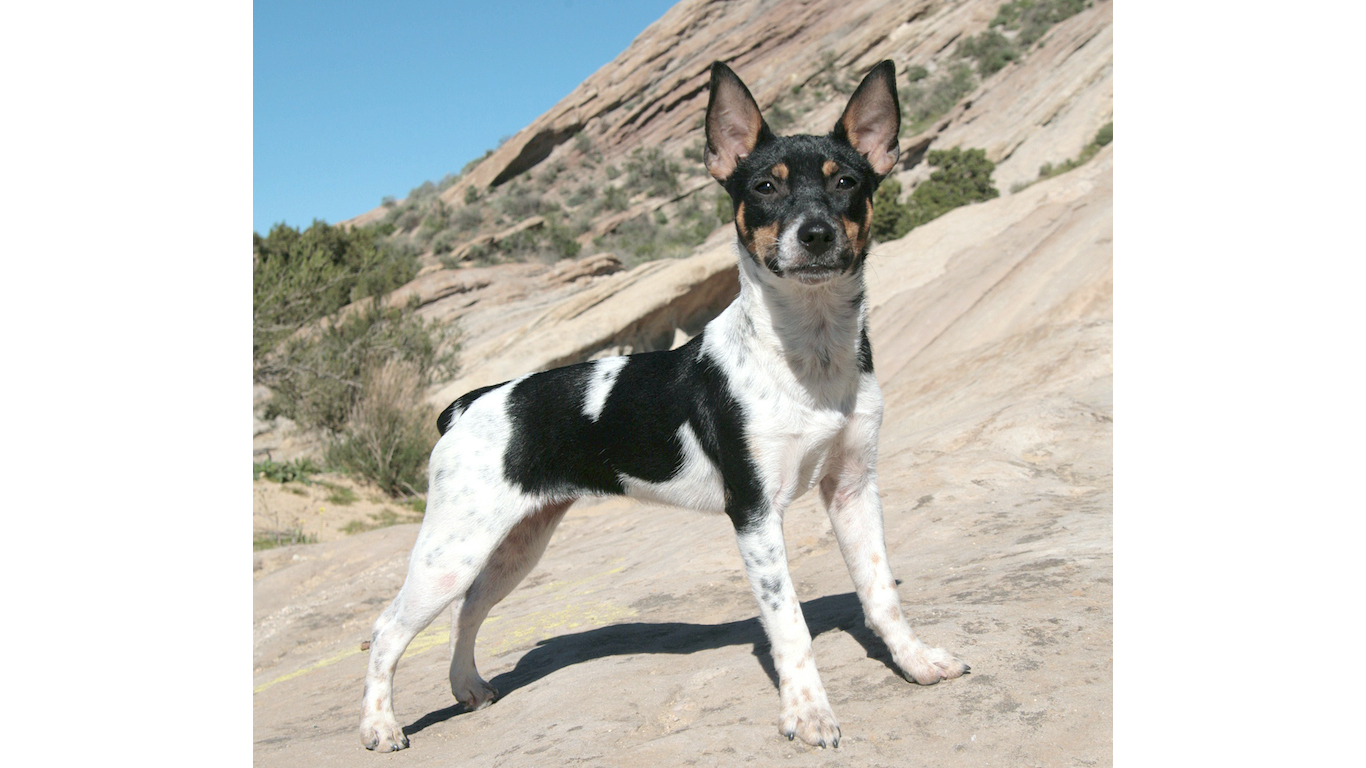
Rat Terrier
> Year registered: 2013
> Weight: 10-25 pounds
The rat terrier was bred to hunt vermin and for farm work. It is energetic and needs exercise. It is intelligent and trainable and does well in agility and obedience events. Its coat has a pied pattern that comes in various colors in combination with white.
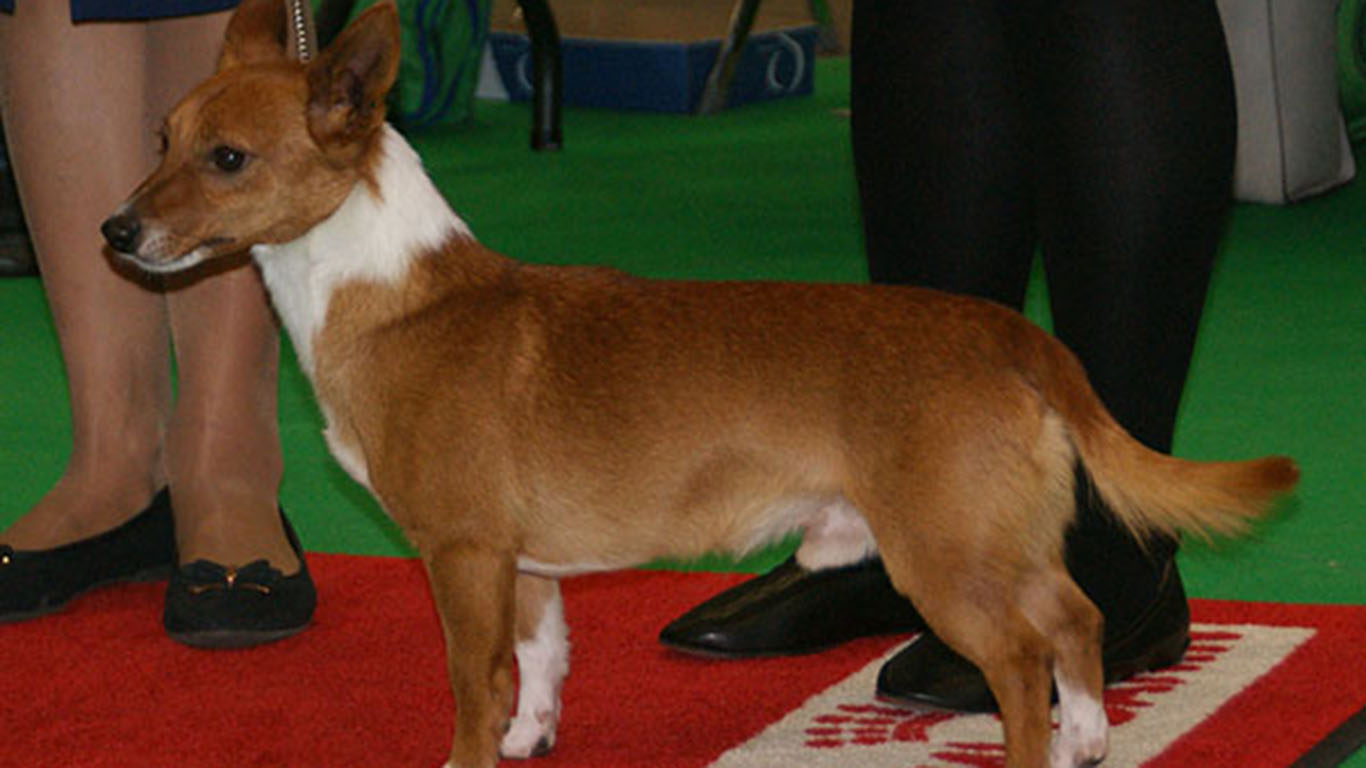
Portuguese Podengo Pequeno
> Year registered: 2013
> Weight for grande: 44-66 pounds
> Weight for medio: 35-44 pounds
The podengo was bred as a hunting dog in its native Portugal and was well adapted to harsh terrain. It was also used by explorers to rid ships of vermin and to catch game when they made landfall. The breed comes in a “medio” and “grande” size. It can have a wire coat or a smooth coat, the latter more popular historically.

Coton de Tulear
> Year registered: 2014
> Weight for males: 9-15 pounds
> Weight for females: 8-13 pounds
The coton de Tulear is also known as the “Royal Dog of Madagascar.” Coton is the French word for cotton, which the breed’s white coat resembles, and Tulear is a town in Madagascar. Coton de Tulear is a companion dog, an AKC designation that certifies a dog is able to perform obedience tasks. It is small but sturdy, with an expressive face and a hypoallergenic coat.
[in-text-ad-2]
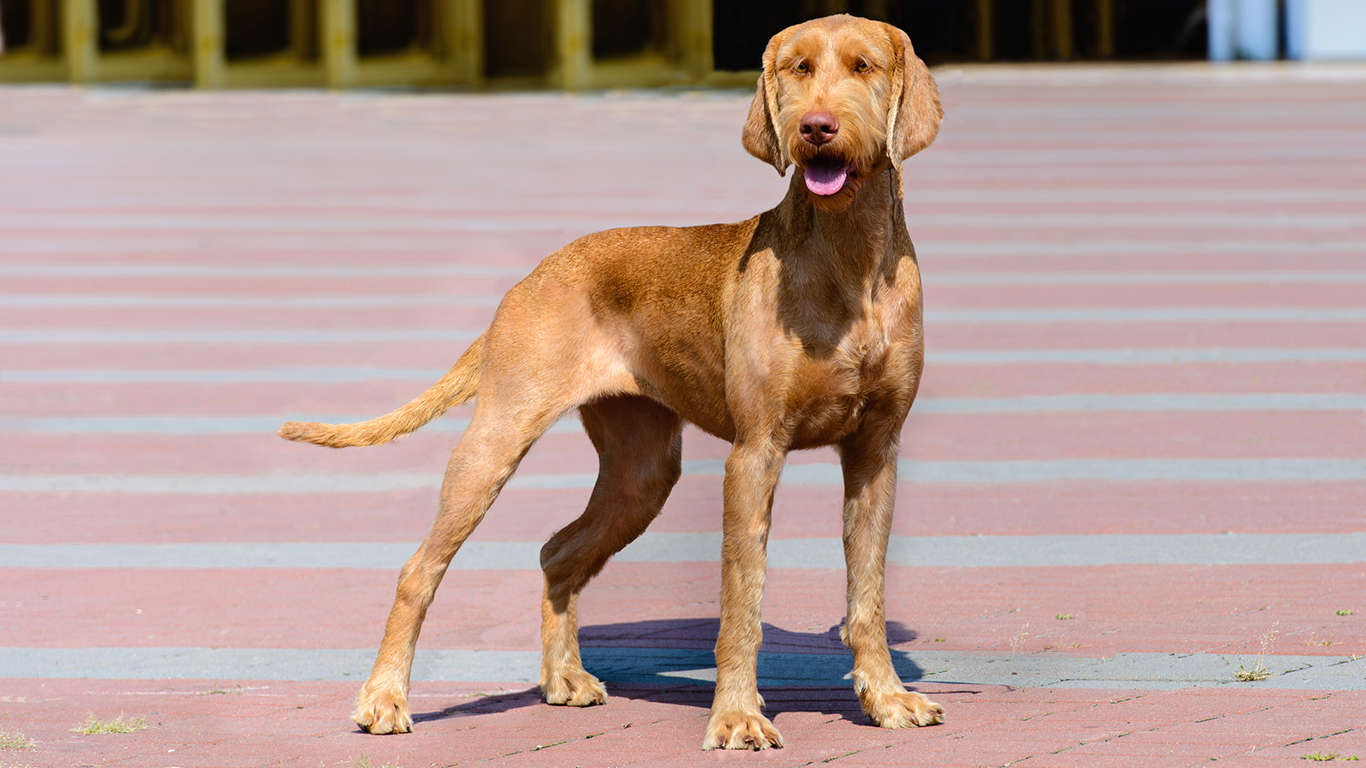
Wirehaired Vizsla
> Year registered: 2014
> Weight for male: 55-65 pounds
> Weight for female: 45-55 pounds
The wirehaired vizsla was first developed in Hungary in the 1930s. Hunters wanted a dog with the traits of the vizsla breed, but heavier and with a wiry coat better suited to rough conditions. It was imported to North America in the 1970s and appealed to sportsmen who wanted a good but different gundog. The breed’s distinguishing features include its beard and eyebrows.
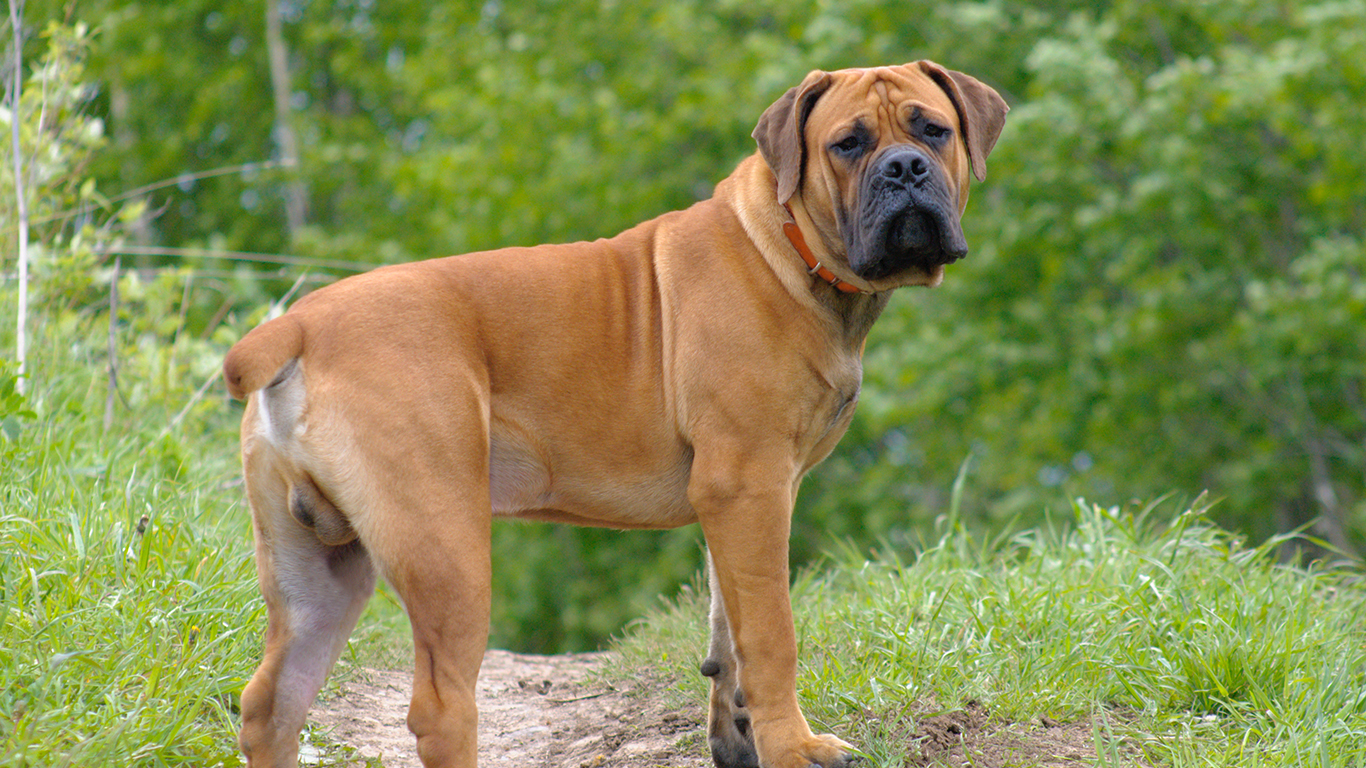
Boerboel
> Year registered: 2015
> Weight: 150-200 pounds
The Boerboel was developed as a farm dog in South Africa. It is a mastiff type, strong and muscular in appearance, and can weigh up to 200 pounds. It is also dominant, so new owners should have experience handling large dogs.
[in-text-ad]
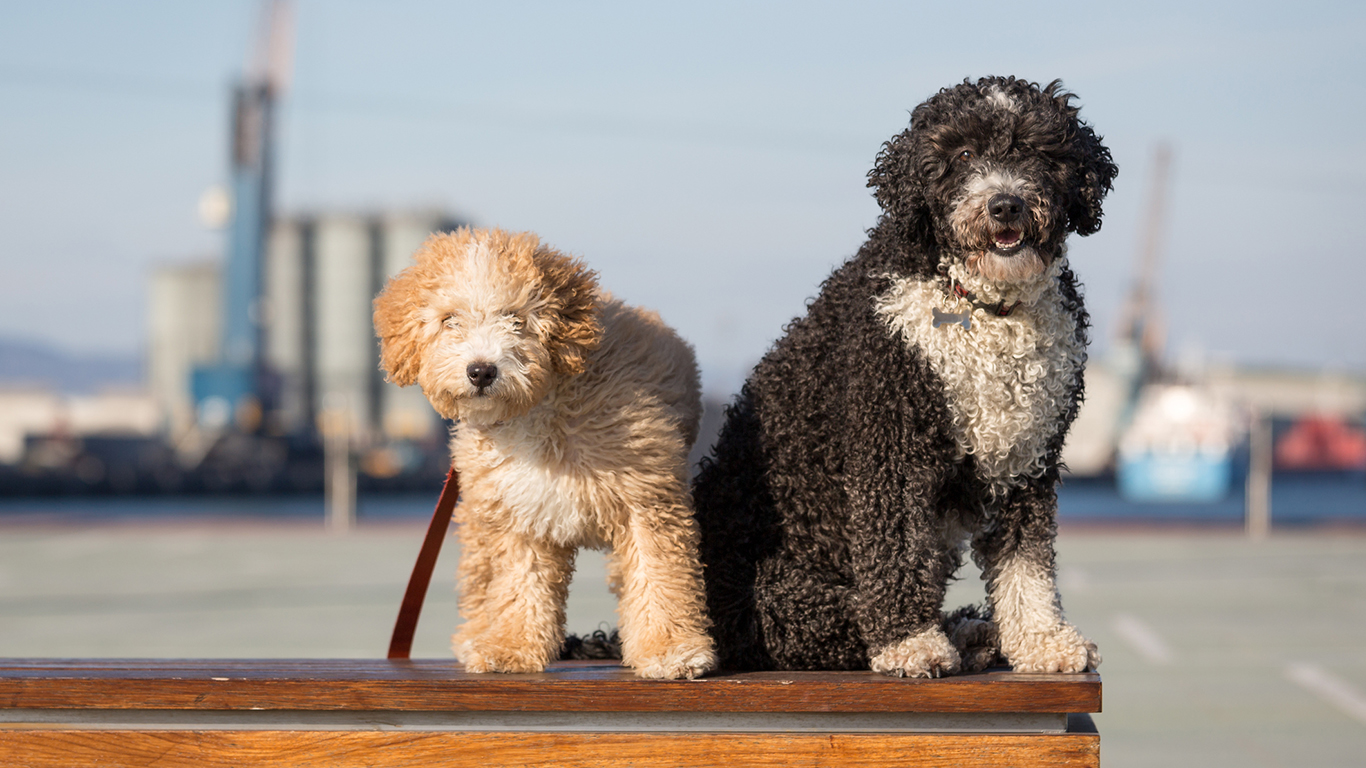
Spanish Water Dog
> Year registered: 2015
> Weight for males: 40-49 pounds
> Weight for females: 31-40 pounds
Despite its name, this isn’t really a water dog, but was developed to herd and protect livestock. In fact, it will herd anything that moves — even children! The Spanish water dog has a curly coat that covers its entire body, including its eyes, giving it a resemblance to the poodle.

Cirneco dell’Etna
> Year registered: 2015
> Weight: 18-27 pounds
The Cirneco dell’Etna is a rabbit-hunting dog found all over Sicily, including the area around the volcano from which it takes its name. It is an ancient breed that has changed little over the years. It has good scent, sight, and hearing and is free from inherited health problems.

Miniature American Shepherd
> Year registered: 2015
> Weight: 20-40 pounds
The miniature American shepherd was developed in California in the 1960s and was originally called the miniature Australian shepherd. It has been used to herd small stock such as sheep and goats, and its own small size and temperament makes it a good household pet and travel companion.
[in-text-ad-2]
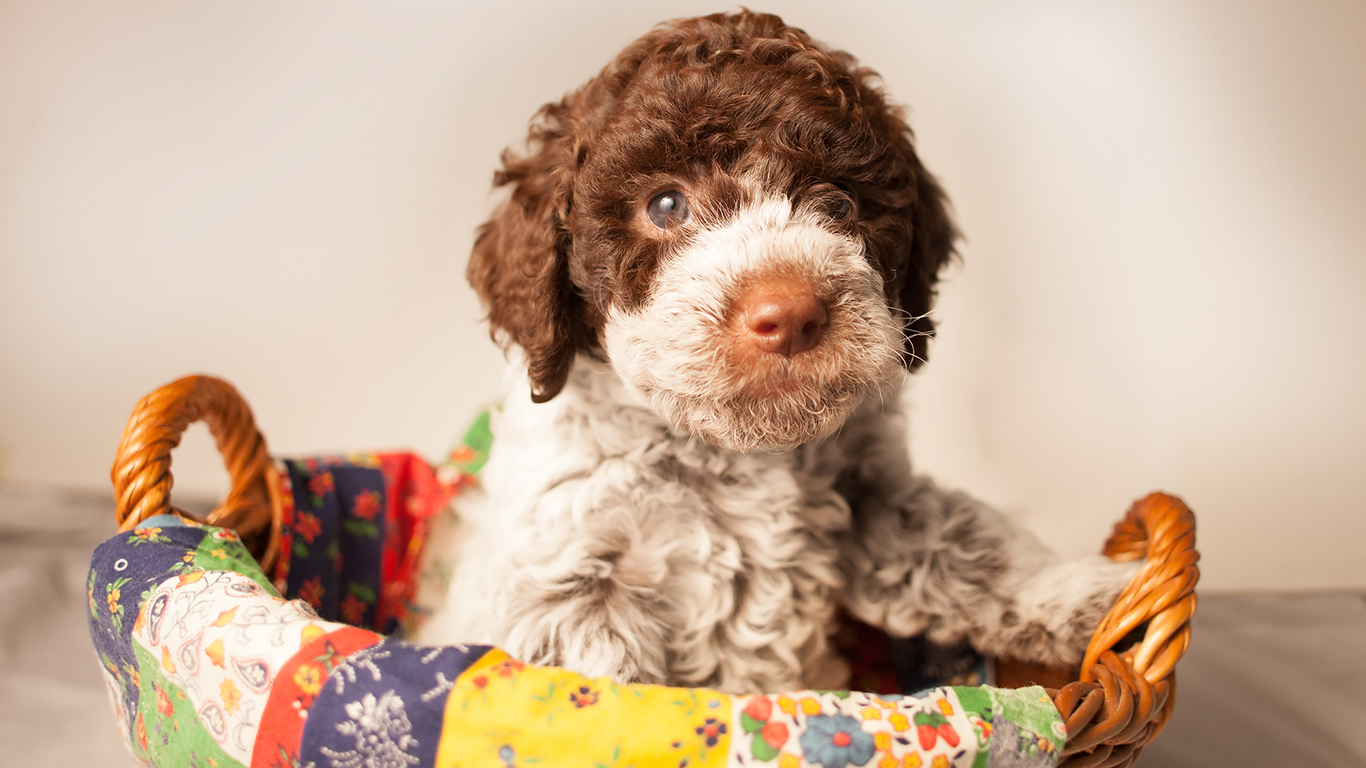
Lagotto Romagnolo
> Year registered: 2015
> Weight for males: 28.5-35 pounds
> Weight for females: 24-31 pounds
The lagotto romagnolo originated in Italy, where it has been used to hunt waterfowl and truffles. Its hunting skills mean it has also been used in search and rescue. The lagotto romagnolo can be shy, so socialization is very important, particularly during the early weeks of its life. As a working dog it needs regular mental stimulation and physical exercise.
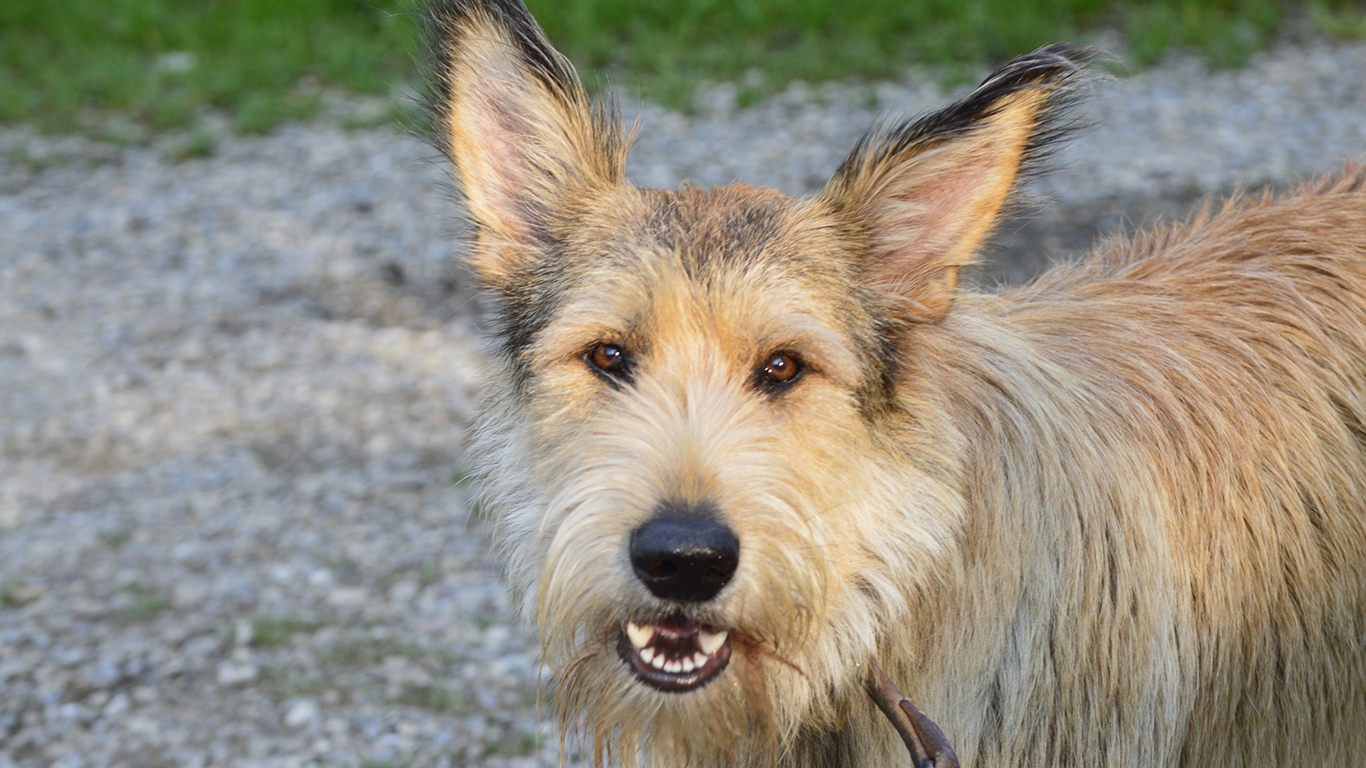
Berger Picard
> Year registered: 2015
> Weight: 50-70 pounds
The berger Picard is one of the oldest French sheepdog breeds. It needs a lot of exercise, but should be kept on a leash as it has a vigorous prey drive. A berger Picard was featured in the movie “Because of Winn-Dixie” and the Berger Picard Club of North America was formed shortly after the film’s premiere in 2005.
[in-text-ad]
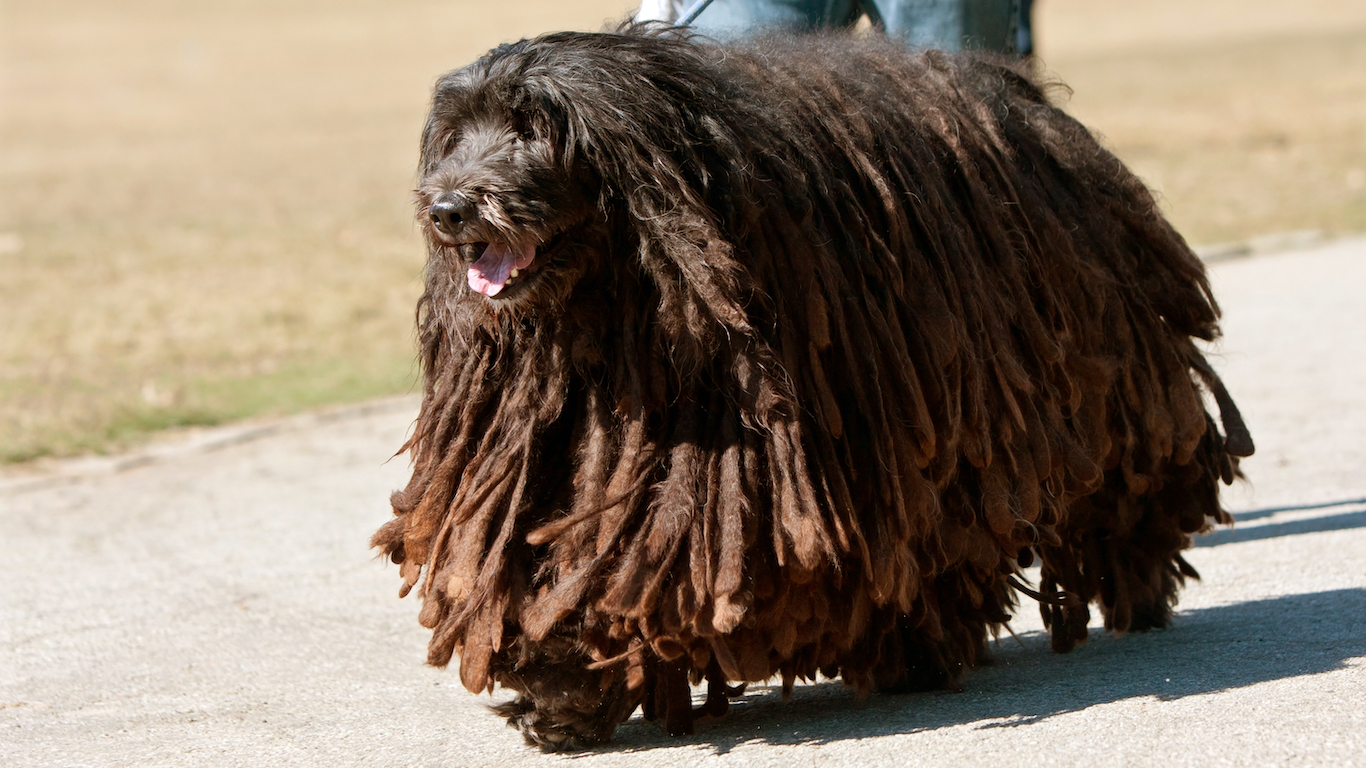
Bergamasco
> Year recognized: 2015
> Group: Herding
> Life expectancy: 13-15 years
The Bergamasco is a sheepdog with origins in the Middle East, but it has long been associated with, and gets its name from, the town of Bergamo in the Italian Alps. The breed’s most distinctive feature is its coat, which consists of hair of three different textures layered over its body and legs. This protects it from the elements and from predators.
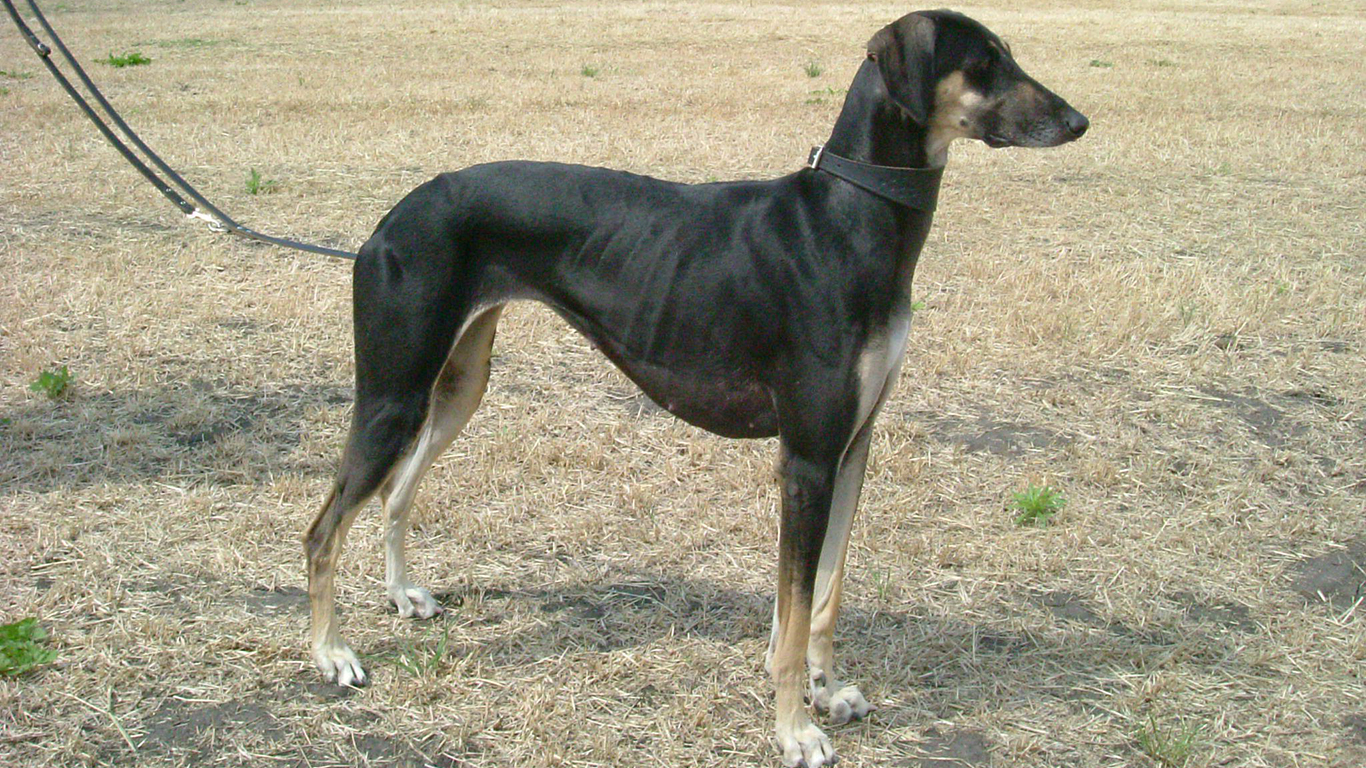
Sloughi
> Year registered: 2016
> Weight: 35-50 pounds
The sloughi, also known as the Arabian greyhound, is a sighthound breed that originated in North Africa. Similar dogs were prized in ancient Egypt and given as tributes to the Pharaohs. The sloughi is known for its speed, agility, and endurance, and it is relentless in pursuing prey.
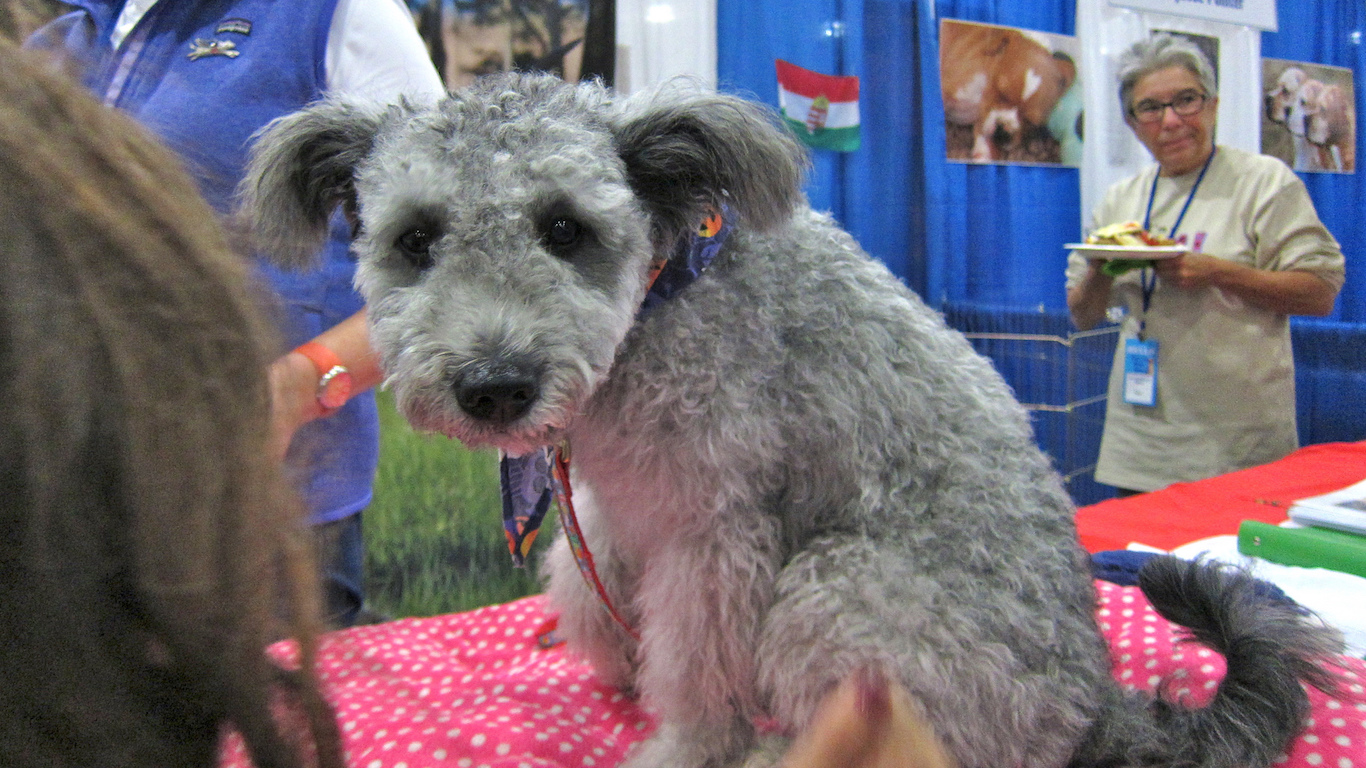
Pumi
> Year registered: 2016
> Weight for males: 27-29 pounds
> Weight for females:22-24 pounds
The pumi was originally bred in Hungary to herd sheep and semi-wild livestock in rugged conditions. It is very energetic and excels at dog sports. It doesn’t shed, but it does need regular brushing and combing. The pumi is relatively rare in the U.S., where only a few litters are born each year.
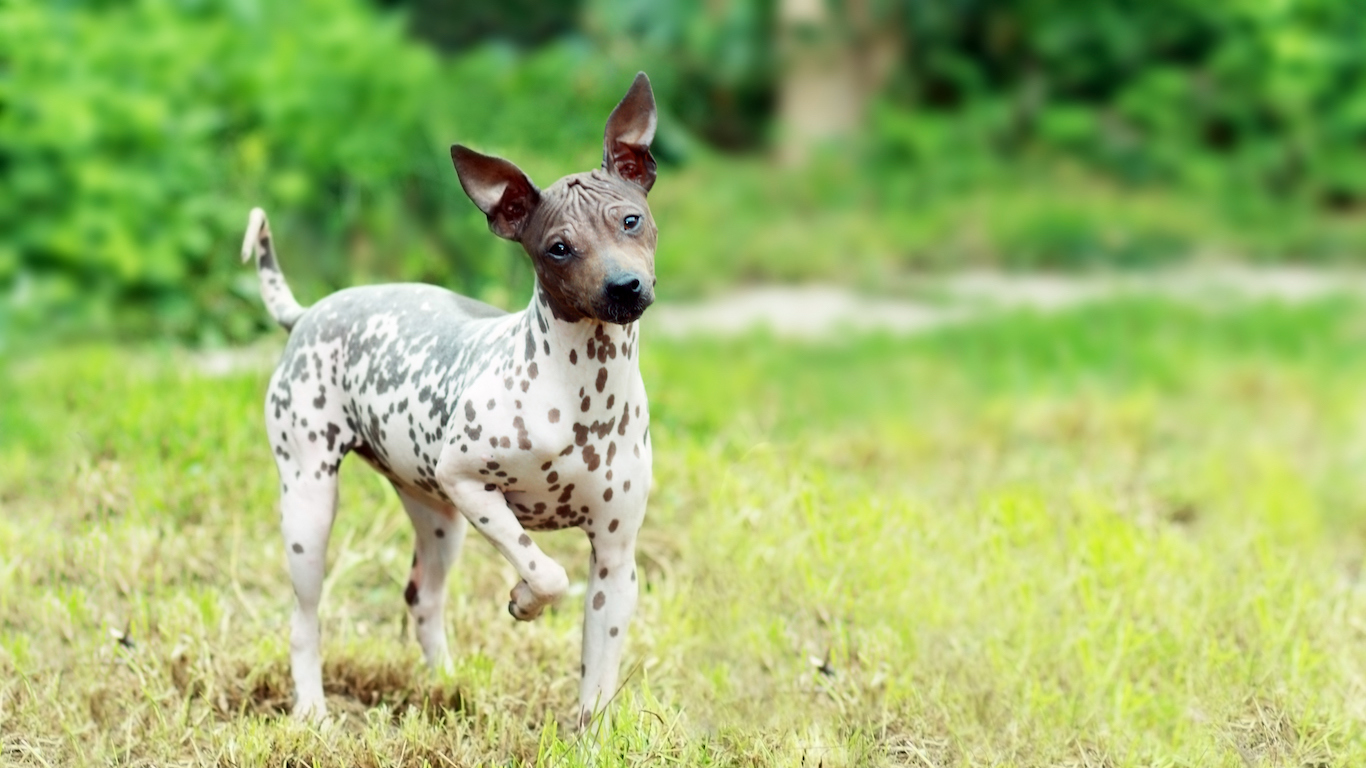
American Hairless Terrier
> Year registered: 2016
> Weight: 12-16 pounds
The newest breed on our list first appeared in 1972, when a hairless puppy was born in a litter of rat terriers in Louisiana. A breeding program led ultimately to registration by the AKC in 2016. In fact, it’s the first hairless breed to have originated in the U.S. The lack of hair means it’s not suitable for hunting or ratting, but it does make an excellent watchdog.
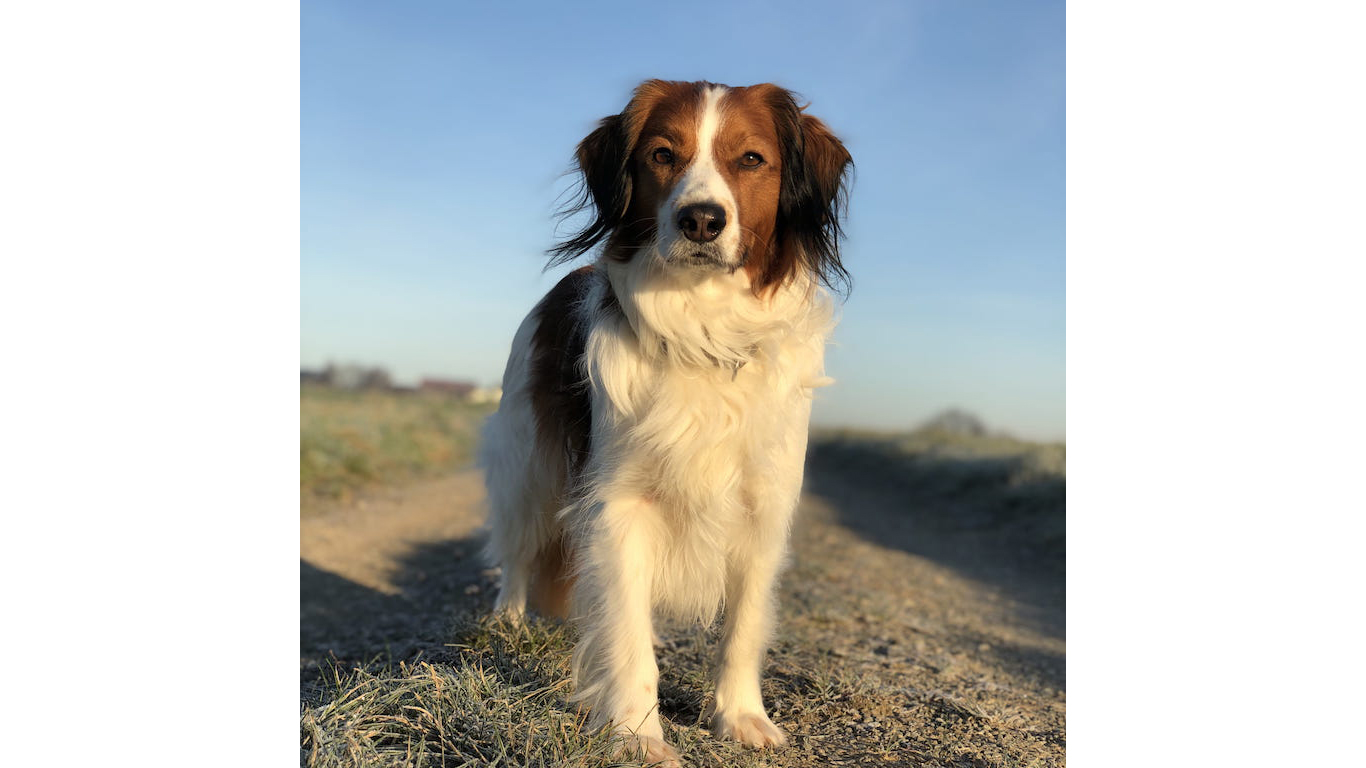
Nederlandse Kooikerhondje
> Year recognized: 2018
> Group: Sporting
> Life expectancy: 12-15 years
The Nederlandse Kooikerhondje is known as the “little white and orange dog with a big heart” because of its color and temperament. It was used by hunters to lure ducks into cages. It might have died out but for the efforts of a Dutch noblewoman, Baronesse von Hardenbroek van Ammerstol, during and after World War II. The breed was officially recognized by the Raad van Beheer (the Dutch equivalent of AKC) in 1971.
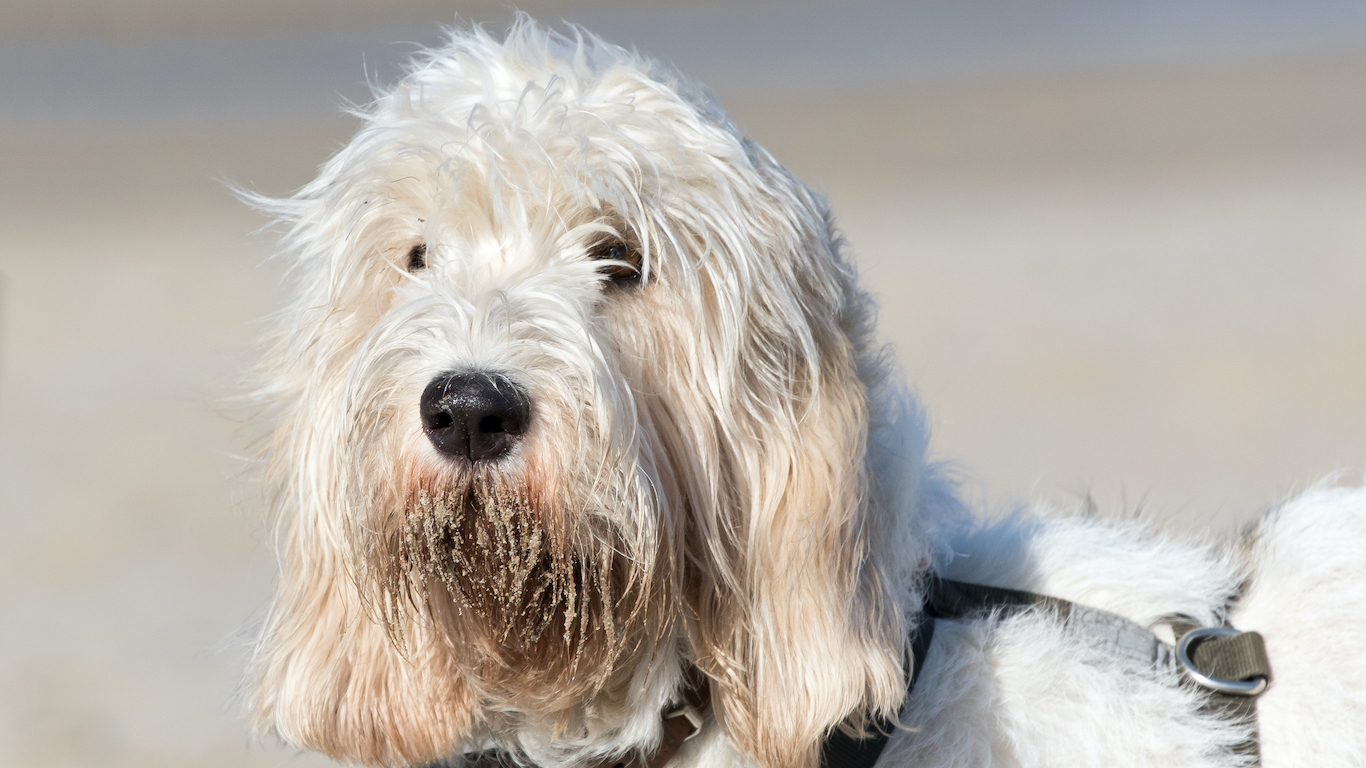
Grand Basset Griffon Vendéen
> Year recognized: 2018
> Group: Hound
> Life expectancy: 13-15 years
The grand basset griffon Vendéen is a scenthound that originated in the Vendée region of France. It has a shaggy coat, complemented by a shaggy moustache, beard, and eyebrows. It is a low-set dog with short legs, bred so that hunters on foot could keep up with it.

Azawakh
> Year recognized: 2019
> Group: Hound
> Life expectancy: 12-15 years
The Azawakh is a sighthound and a sprinter that originated in West Africa. It was used by Tuareg nomads to hunt hare, antelope, wild boar and other prey, to protect camps and flocks and was regarded as a member of the family. The Azawakh is a lean dog with long legs and a very fine coat.
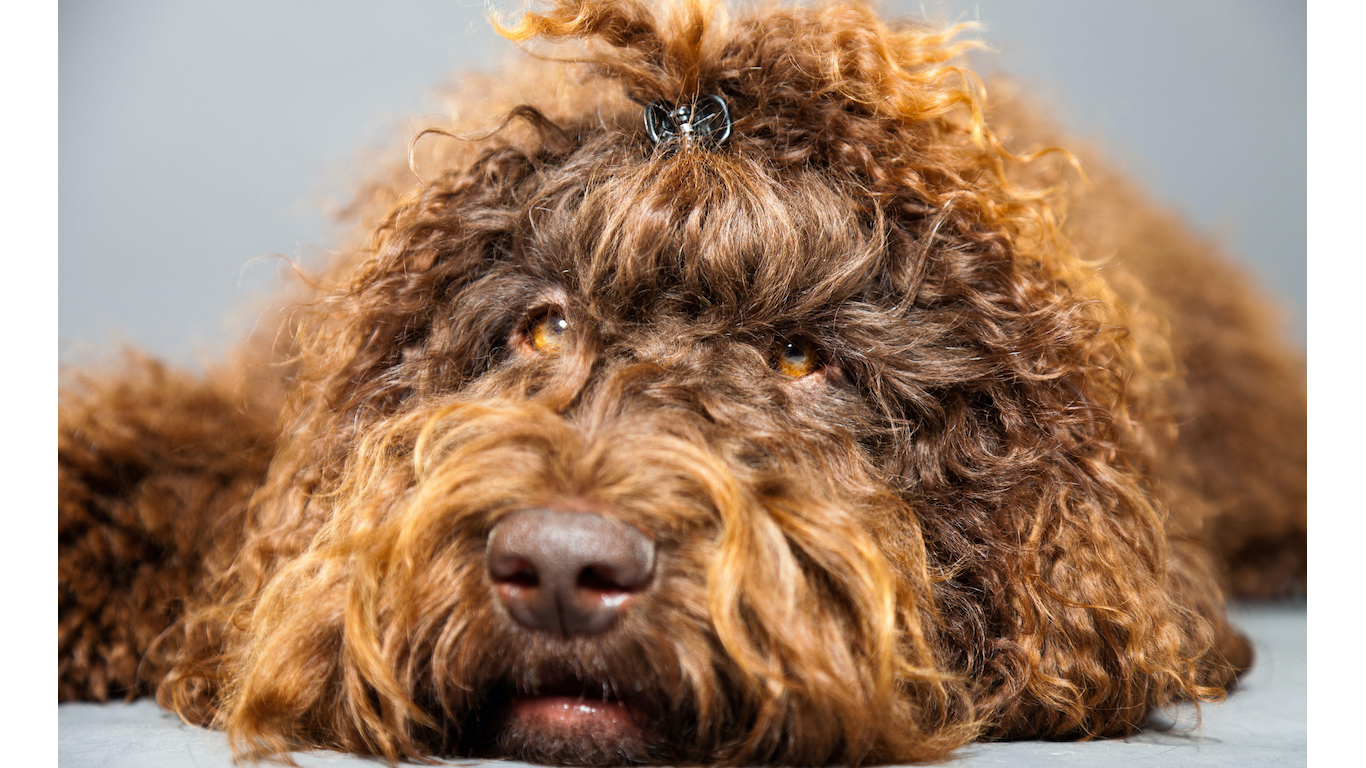
Barbet
> Year recognized: 2020
> Group: Sporting
> Life expectancy: 12-14 years
This French water dog was used to locate, flush, and retrieve birds hundreds of years ago, but it was only recognized by the AKC this year. Its defining characteristic is a dense curly coat that runs the full length of its body to the tip of its tail. The Barbet is athletic, intelligent, adaptable and devoted, in short a versatile dog.

Dogo Argentino
> Year recognized: 2020
> Group: Working
> Life expectancy: 9-15 years
As its name suggests, the Dogo Argentino originated in Argentina. The breed was created by Antonio Nores Martinez, a doctor with a passion for dogs and for hunting. It is a powerful and athletic dog with a short, completely white coat. It is used to hunt wild boars and other formidable game and is very protective of those it loves. It is sometimes called the Argentinian mastiff.
Retirement planning doesn’t have to feel overwhelming. The key is finding expert guidance—and SmartAsset’s simple quiz makes it easier than ever for you to connect with a vetted financial advisor.
Here’s how it works:
Why wait? Start building the retirement you’ve always dreamed of. Click here to get started today!
Thank you for reading! Have some feedback for us?
Contact the 24/7 Wall St. editorial team.